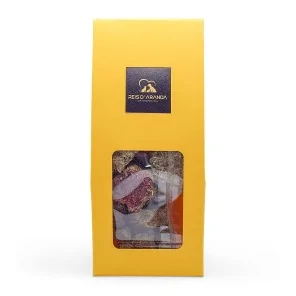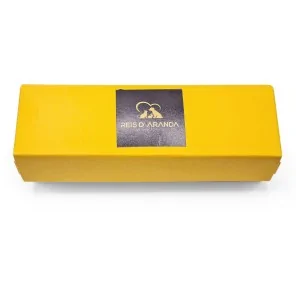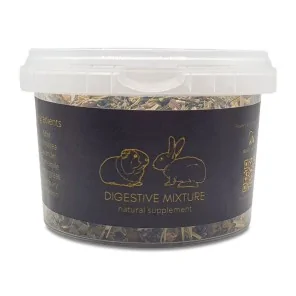The Tornjak originated from genetically homogeneous, almost extinct, indigenous shepherd dogs. These dogs have...
THE BIG CHINCHILLA RABBIT
INTRODUCTION
Although you may be confused when you are first told the name, the fact is that the large chinchilla rabbit is not related to the chinchilla. In fact, the only thing these two furry rabbits have in common, apart from the fact that they are rodents, is the colour of their fur.
THE ORIGIN OF THE LARGE CHINCHILLA RABBIT
The first chinchillas were created by a French engineer, MJ Dybowski, and were first exhibited in April 1913 in Saint-Maur, France. The new breed took the rabbit world by storm as the ideal fur rabbit, which closely resembled the South American woolly chinchilla. A lady, Haidee Lacy-Hulbert, from Mitcham Surrey, imported the first specimen of the breed to England in the summer of 1917. A British exhibitor presented a consignment at the New York State Fair in 1919. After the show, he sold the entire stock to Edward H. Stahl and Jack Harris. The original chinchillas were quite small, 5 to 7 1/2 pounds, and American breeders set out to produce a larger animal that would be more suitable for meat and fur. Through selective breeding for larger size, fine bone and good percentage yield, a breed standard was issued for the heavyweight chinchilla. It was a larger form of the standard chinchilla: same shape, colour and general composition. In 1924, both Chinchilla breeds were adopted into the standard book and soon after, the heavyweight Chinchilla was renamed the American Chinchilla.
There is no single person who can be credited with the development of the American Chinchilla, although it can be credited with having a great impact on rabbit breeders and other rabbit breeds. Between November 1928 and November 1929, no fewer than 17,328 chinchillas were registered through the American Rabbit Breeders Association, Inc. a record that has yet to be broken. The chinchilla rabbit has contributed to the development of more breeds and varieties of rabbits worldwide than any other domestic rabbit breed. Chinchilla derivatives have created the silver martens and American sables in the United States, and the Siamese sable and sallander breeds abroad.
The American chinchilla is the rarest of the chinchilla breeds. Its small population is largely due to the demise of the rabbit fur industry in the late 1940s. Despite the breed's excellent meat-producing qualities, today's producers prefer an all-white rabbit for the meat market.
WHAT IS THE GREAT CHINCHILLA RABBIT LIKE?
1. TYPE, SHAPE AND CONSTRUCTION OF BODY: The body is slightly elongated, cylindrical, equally broad in front and back, with a broad chest and full pelvis, with an even, well rounded back line. The neck is short, the shoulders broad and strongly formed. The legs are strong and of medium length. The head is strong, with broad forehead and full cheeks, close to the body. The ears are fleshy, erect, well furred, close fitting to the body. The ideal length is 13 to 14.5 cm. A small, well formed dewlap is permissible in bitches.
- SERIOUS FAULTS: Length of ear less than 12 cm and more than 15.5 cm.
2. WEIGHT:
- NORMAL WEIGHT: 4.50 kg.
- MINIMUM WEIGHT: 3.50 kg.
- MAXIMUM WEIGHT: 5.50 kg.
3. COAT HAIR: Ears should be well furred. The coat medium long, dense, with a well developed texture, but not too thick.
4. UPPER COLOUR AND COAT COLOUR: The overall colour presents itself as a light ash grey (silver grey, grizzled, black, which is more pronounced at the back). The upper colour under which there is a blackish stripe about 2-3 mm wide, is marked by white hairs between which pure black hairs stand out, making a shadow caused by tufts of black hair arranged close together which should be unevenly distributed over the body. The colour of the chest and legs should correspond to the overall colour, on the sides of the body the colour of the coat should reach as low as possible. The rims of the ears are black. The neck wedge should be small and greyish white. The tail is mottled above the black with greyish-white hairs, the back is white. The colour of the belly is white. The eye colour is dark brown and the nails black-brown or with a strong bluish tinge.
- Slight faults: Chest and forelegs slightly light, sides and rear slightly light. Brownish tinge to head and ears. Very large neck wedge. Small black border on ears.
- SERIOUS FAULTS: Brownish tints all over the top, yellow wedge, chest and forelegs completely light, completely even shading, silver or iron.
5. INTERMEDIATE COLOUR: The intermediate colour is about 5mm wide, clearly defined from the base to the beginning of the upper colour, whitish grey. The sharper the demarcation of the individual colour zones, the brighter the play of colours in the coat.
- Slight faults: Intermediate colour slightly narrow or not very marked.
- SERIOUS FAULTS: Total absence of intermediate colour, intermediate colour too wide (more than 10 mm).
6. UNDER COLOUR: The under colour starts at the scalp and must be present throughout the body. The dark blue colour should represent approximately 2/3 of the length of the hair. In case of older bitches a lighter colour is permissible.
- Slight faults: Impure, intercalated, light undercolour, brownish tone in undercolour, light or very strong undercoat.
- SERIOUS FAULTS: Under colour of belly totally light.
HEALTH OF THE GRAND CHINCHILLA RABBIT
The Grand Chinchilla rabbit has an average life expectancy of 8 years, with no hereditary diseases of note apart from malocclusion.
THE PERSONALITY OF THE GREAT CHINCHILLA RABBIT
Like all rabbits, the American Chinchilla has its own personality, although in general terms it is an affable and affectionate rabbit with children. If it is kept from an early age or if it is adopted and gets used to the family nucleus, we can have a very good pet. In general we are talking about a calm rabbit.
As for the relationship with other pets it will depend on exactly which animal it is, although with other rabbits of the opposite sex we can generalise that this would not be a problem, quite the contrary.
CONCLUSION
Whether for pets, rabbit shows, meat animals or for commercial use, American Chinchillas are an excellent breed for any rabbit lover to consider. While their large size may be a deterrent to some, their calm and social personality more than makes up for it. Its endangered status may make it difficult to find in certain parts of the country, but it is worth seeking out. The American chinchilla was once the most popular rabbit in the country and, for all its benefits and charms, it could become so again.
Leave a comment
Log in to post comments
















